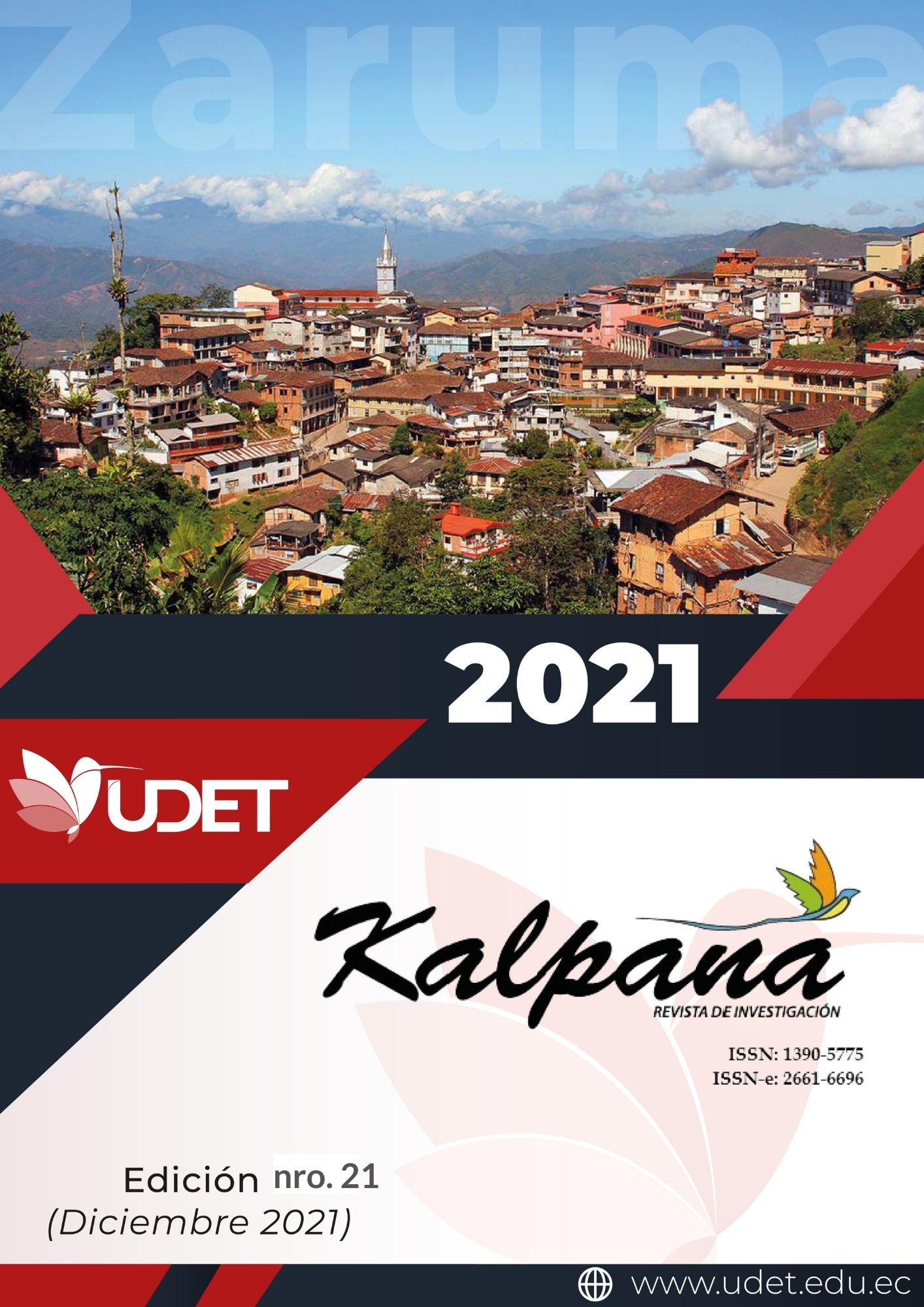Safeguarding: a tool for the conservation of Intangible Cultural Heritage, applied to rural territories.
Salvaguardia: una herramienta para la conservación del Patrimonio Cultural Inmaterial, aplicado a territorios rurales.
Keywords:
Intangible cultural heritage, rurality, safeguarding, cultural tourismAbstract
This research was conducted to contribute to the continuity of the manifestations of intangible cultural heritage in the rural parishes of Latacunga canton, the study is based on the analysis of popular festivals for the development of a safeguarding plan, it addresses the identification, research, and definition of specific actions to allow the manifestations to remain in force. The methodology used is descriptive, based on the qualitative approach with the application of the life history instrument. By means of which a direct approach to the bearers of the manifestation is generated, to collect their meanings with respect to the intangible cultural heritage. The majority of the manifestations studied remain in force, while fewer are those with a high or medium level of vulnerability. These findings imply that, although intangible cultural heritage in rural areas has a low level of vulnerability, it is necessary to protect it by detecting threats to the transmission of knowledge, know-how, techniques, or practices inherent to the manifestation. This research contributes to the area of cultural tourism through the determination of the degree of vulnerability of the manifestation and the construction of strategies for its promotion.
References
Amescua, C., & Hilario, T. (2013). Algunas consideraciones importantes. En Experiencias de salvaguardia del patrimonio cultural inmaterial (págs. 1-11). México.
Bericat, E. (2016). Cultura y sociedad. En J. I. Ussel,: La sociedad desde la sociología: una introducción a la sociología general (págs. 123-151).
Botero, L. (1991). Compadres y priostes, La fiesta andina como espacio de memoria y resistencia cultural. Quito: Ediciones Abya-Yala.
Brañes, R (1993). “El objeto jurídicamente tutelado por los sistemas de protección del patrimonio cultural y natural de México”, en Enrique Florescano (comp.), El patrimonio cultural de México, México, cnca/fce, pp. 381-405
Bustos, R. (2004). Patrimonialización de valores territoriales. Turismo, sistemas productivos y desarrollo local. Aporte y Transferencias, https://www.redalyc.org/pdf/276/27680202.pdf.
Escobar, C. (2017). Propuesta de una metodología para el registro de patrimonio cultural inmaterial con objetivos de desarrollo turístico, aplicación al caso de estudio parroquia Mulalillo, cantón Salcedo. Recuperado de Repositorio de la Escuela Superior Politécnica de Chimborazo: http://dspace.espoch.edu.ec/handle/123456789/6573
Fontal, O. (2006). Claves del patrimonio cultural del presente y desde el presente para abordar su enseñanza. Dialnet, 9-31. Recuperado de https://dialnet.unirioja.es/servlet/articulo?codigo=2200888
Fontal, O. (2013). Cómo Educar en el Patrimonio, Guía práctica para el desarrollo de actividades de educación patrimonial. Madrid: Comunidad de Madrid.
Fontal, O. (2017). Patrimonios, objetos e historias de vida. Análisis. Recuperado de https://journals.openedition.org/midas/1310
INPC. (2011). Instructivo para fichas de registro e inventario Patrimonio Cultural Inmaterial. Recuperado de Instituto Nacional de Patrimonio Cultural: https://downloads.arqueo-ecuatoriana.ec/ayhpwxgv/noticias/publicaciones/INPC-X-InstructivoParaFichasDeRegistroInventarioPatrimonioInmaterial.pdf
INPC. (2013). Guía metodológica para la elaboración de planes de gestión y manejo de los Centros Históricos de las ciudades medias en Ecuador. Quito.
INPC. (2013). Guía metodológica para la salvaguardia del Patrimonio Cultural Inmaterial. Quito: SobocGrafic.
Ministerio Coordinador de Patrimonio. (2012). Introducción al Patrimonio Cultural (Manual Introductorio para el personal municipal). Recuperado de http://www.amevirtual.gob.ec/wp-content/uploads/2017/04/librointroduccion-al- patrimonio-cultural.compressed-ilovepdf-compressed.pdf
IPANC. (2010) . Instituto Iberoamericano de Patrimonio Cultural y Natural. Principios rectores de salvaguardia, Quito, MCP, INPC, IPANC. Resultado del taller Instrumentos para la salvaguardia del Patrimonio Cultural Inmaterial, Quito, agosto de 2010. El taller contó con la participación de funcionarios estatales, académicos y expertos en patrimonio inmaterial del Instituto de Patrimonio Histórico y Artístico del Brasil (IPHAN).
Paredes, E. (1969). Tradiciones de Cotopaxi. Latacunga: Casa de la Cultura Ecuatoriana "Benjamín Carrión".
Prats, Ll. (1997). Antropología y Patrimonio. Barcelona, España: Editorial Ariel S.A.
UNESCO. 1982. Conferencia Mundial sobre las Políticas Culturales. México.
UNESCO. (2003). Convención para la Salvaguardia del Patrimonio Cultural Inmaterial. París. Recuperado de: https://site.inpc.gob.ec/pdfs/lotaip2020/Convencion%202003.pdf
UNESCO. (2015). Plan Nacional de Salvaguardia del Patrimonio Cultural Inmaterial. España. Recuperado de: https://oibc.oei.es/uploads/attachments/182/CULTURA_INMATERIAL.pdf
Published
How to Cite
Issue
Section
License
Copyright (c) 2021 Maricela de los Ángeles Pulloquinga Neacato, Evelin Valeria, Chimborazo Espinosa, Magaly Nicole Toapanta Quimbita

This work is licensed under a Creative Commons Attribution-NonCommercial-ShareAlike 4.0 International License.

Esta obra está bajo una Licencia Creative Commons Atribución-NoComercial-CompartirIgual 4.0 Internacional.














